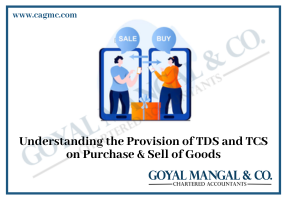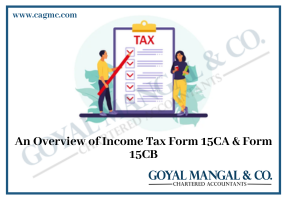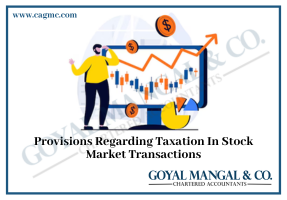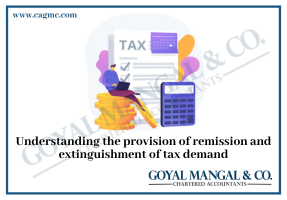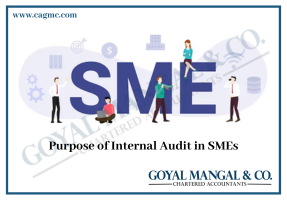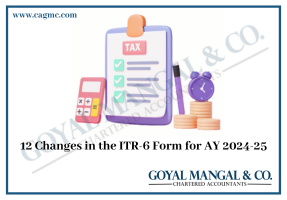
In today’s environment, doing business has changed to the point where concentrating and focusing on one area is no longer sufficient. Most medium and large enterprises have become so diverse that they now run many businesses in different industries. As a result, a single company could contain multiple parts or undertakings. In which, each with its own assets and liabilities and each focused on a particular activity. As a result, if the necessity arises, the company will be able to sell a piece or the entire endeavour. We refer to it as a slump sale. In this article, we’ll discuss Slump Sale and Its Taxation in detail.
Due to several tax and stamp duty considerations, “Slump Sales” are one of the most popular means of carrying out a deal in Mergers & Amalgamation (M&A) transactions.
|
Table of Content |
Concept of Slump Sale
A slump sale,’ in basic terms, is the transfer of a whole or part of a firm as going concern. According to section 2(42) (C) of the Income Tax Act, 1961.
For tax purposes, a slump sale is one in which an owner of the undertaking sells it without taking into account the individual valuations of the assets and liabilities contained within the undertaking. It’s worth noting that identifying individual values may be relevant only for the purposes of calculating stamp duty or other equivalent taxes.
Meaning of Slump Sale
The term “slump sale” refers to a sale in which the-
- The sale of one or more businesses
- As a consequence of the sale
- In exchange for a one-time payment
- Without putting a value on the specific assets and liabilities involved in such transactions.
Explanation 1 to section 2(19AA) states that an “undertaking” includes any portion of an undertaking, a unit or division of an undertaking, or a business activity taken as a whole, but excludes individual assets or liabilities, or any combination of them that does not constitute a business activity.
Points to Ponder
The following which the individual is to keep in mind are as follows:
- A lump-sum payment is made in exchange for the transfer. This decision should take place without putting a monetary value on specific assets and liabilities. The consideration may be payable in cash or by issuing Transferor Company shares.
- The ability to identify the price due to individual things sold as part of a slump sale (plant, machinery, and dead stock) may not qualify a transaction as a slump sale – CIT vs. Artex Manufacturing Co., [227 ITR 260 (SC)]. However, in the instance of a slump sale involving land/buildings for which a separate value has been determined under the relevant stamp duty legislation, the slump sale will not be harmed by Explanation 2 to Section 2 (42)(C).
- Explanation 2 to section 2(42) (C) clarifies determining the value of an asset or obligation for the purpose of paying stamp duty, and registration fees. Moreover, other similar taxes should be clear and there should be no ambiguity in assigning values to individual assets and liabilities. As a result, if stamp duty value is applicable to land, the transaction will constitute a qualifying slump sale under section 2. (42)(C).
- A slump sale is the transfer of assets without the transfer of liabilities.
- There is no requirement for court approval.
Slump Sale and Its Taxation under Income Tax Act, 1961
The mechanism for computing capital gains arising from slump sales is provided by Section 50B of the Income Tax Act, 1961. Some essential points that emerge from a simple reading of the Section are:
- Special Arrangements: Special provision for computation of capital gains in case of slump sale,’ says Section 50B. Because slump sales are under governance by a “special provision,” this section takes precedence over all other Act provisions.
- Holding Period: Long-term capital gains are capital gains originating from the transfer of an undertaking. Gains will act as short-term capital gains if the undertaking has been “owned and held” for less than 36 months prior to the date of transfer.
- Taxability Year: The year in which the undertaking is transferred is when it becomes taxable.
- Formula: The difference between the sale consideration and the undertaking’s net worth is used to calculate capital gains on slump sales.Capital Gain= Sale Consideration-Net Worth
- Average Net Worth: For the purposes of sections 48 and 49 of the Act, net worth is the cost of acquisition plus the cost of the improvement.The difference between ‘the aggregate value of total assets of the undertaking or division’ and ‘the value of its liabilities as per books of account’ is present as net worth in Explanation 1 to section 50B. The slump sale laws now apply to non-corporate entities as well, thanks to this modification.The sum total of the ‘aggregate value of total assets of the undertaking or division’ is:
- In the event of depreciable assets, we determine WDV u/s.43 (6) (c) (I) (C).
- 2- In the case of other assets, the book value.
The value of assets on which a deduction has been applicable under section 35AD. And which is transferred under a slump sale shall treat as NIL for computing net worth.
- Benefits of Indexation: The cost of acquisition, i.e. net worth, is not eligible for indexation under section 50B.
- The case where there is more than one undertaking: If more than one undertaking is being sold in a depression, the computation should be done independently for each undertaking.
- Revaluation: Revaluation of assets will not take into account when calculating “net worth,” i.e. revaluation of assets will be ignored when calculating “net worth,” regardless of whether it is done this year or in previous years.
- P/G/B/P: Even if stock is transferred in a slump sale, there will be no profits under the heading P/G/B/P.
Cherry Picking at a Slump Sale
Until recently, the courts, have consistently upheld that if the transferor company is keeping some part of the undertaking or assets, the transaction will not be considered as a slump sale or sale of the firm as a going concern, and the VAT regulations will apply. As a result of the foregoing, it became clear that cherry-picking would be incompatible with the idea of “slump sale” as defined by the Income Tax Act, 1961, and hence illegal.
Slump Sale and Its Taxation under GST
The following are the views with regards to Slump Sale and its taxation under GST:
- Pre-GST Slump Sale: Prior to the implementation of GST, the transfer of a business as a going concern, which included the transfer of a full unit or a business division, was not subject to Sales Tax or Value Added Tax (VAT). The reasoning was that the sale of an entire enterprise may not be comparable to the sale of movable commodities; which were solely subject to sales tax. The court’s interpretation and view on the applicability of VAT on Slump Sales, on the other hand, was unclear.
- Post-GST Slump Sale: From the complex and multilayered tax framework that existed previously, India has lately moved to GST. The Central Goods and Services Tax Act, 2017 (CGST Act) does not spell out the rules for selling a business as a continuing concern or a slump sale. As a result, there is no clear answer as to whether transactions involving slump sales will be taxable under the new CGST Act. Market participants have differing opinions on the subject.Unlike VAT, this system is still in its early stages of implementation. Hence there is no judicial ruling on the subject. As a result, the provisions of the CGST Act must be under close examination in order to arrive at a reasonably inferable conclusion about the applicability of GST to sump sales. The government may impose CGST on supplies of all intra-state products or services, or both, subject to given exclusions. Moreover, it may trigger it at the time of supply, according to the CGST Act’s combined reading of the charging Section 9 (Levy and Collection) and Section 12 (Time of Supply of Goods).WHEREAS, the definition of “Supply” in Section 7(1) of the CGST Act is broader than of “Slump Sale” in Section 2(42)(C) of the Act. Because it encompasses any sale, transfer, disposal, lease/license, or exchange of goods or services, and thus is sufficient to encompass any sale or transfer of goods.However, under Section 2(52), the phrase “goods” exists as to any transportable item other than money and securities. As a result, and as per judicial decisions from the previous indirect tax regime; we can make one argument that GST may not be applicable to Slump Sales. This is because “business as a going concern” is not there in the definition of “goods.”
Endnote
A slump sale is a solution to many challenges in the M&A business involving the transfer of undertakings. This is because it has more advantages than disadvantages, like cost-effectiveness, lump-sum idea, and time efficiency. Slump sales save time since they follow a simple method that requires fewer and easier compliances. However, slump sales require a specific resolution from the board of directors.
